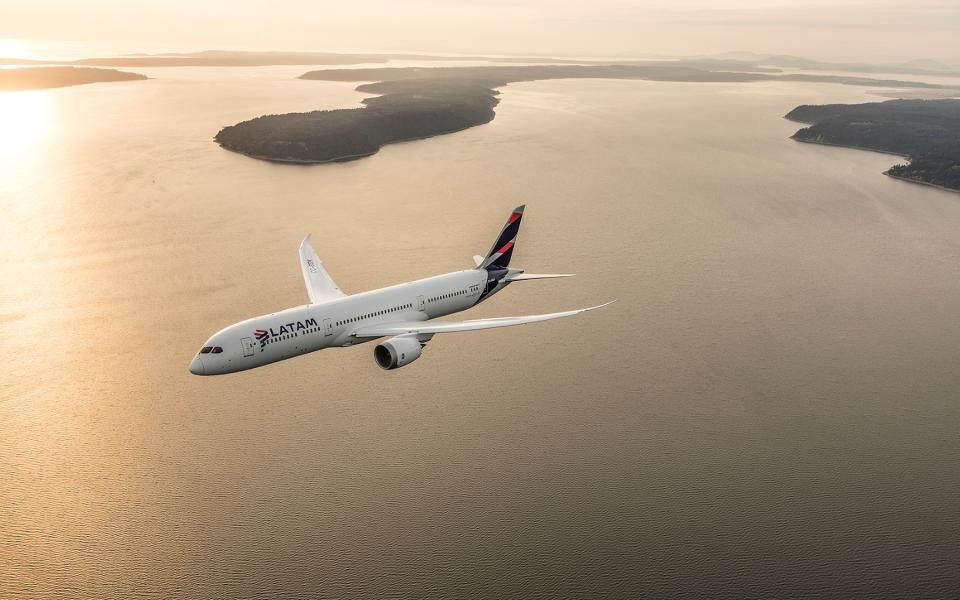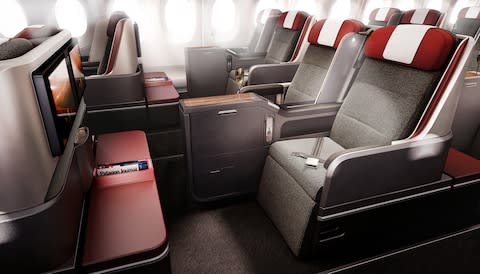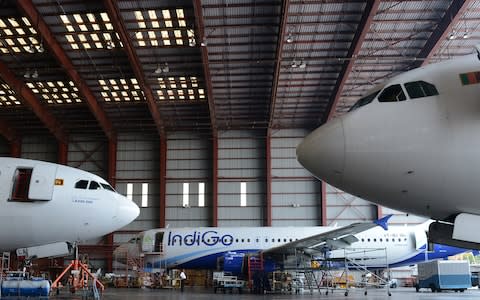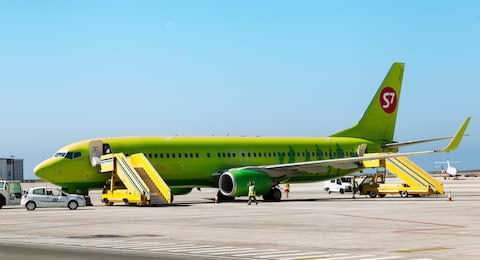Seven giant airlines you've probably never heard of

These massives airline will have most Britons scratching their heads.
LATAM
LATAM might just be the biggest airline you’ve never flown with. Formed as recently as 2012, following the merger of Chile’s LAN Airlines and Brazil’s TAM Airlines, it has a fleet of more than 330 aircraft - more than British Airways, easyJet, Air France, KLM and Qantas, among others - and flies to around 150 destinations in 25 countries (including the US, Canada, Spain, France, Germany, Italy, Portugal, South Africa, Australia, New Zealand and Israel). It is, by some distance, South America’s biggest airline, having transported 67.1 million passengers in 2017 – more than double its nearest rival, Brazil-based Gol Transportes Aéreos.
And it clearly has plans for continental domination. Not content with operating out of just Chile and Brazil, LATAM has launched subsidiaries in Argentina, Colombia, Ecuador, Paraguay and Peru. Having operated as separate carriers for the last few years, they were given the same LATAM livery and branding in 2018.

Its aircraft are very modern, too. LATAM Chile’s fleet has an average age of seven years, according to the website Airfleets.net, and includes 20 swish Boeing 787 Dreamliners. LATAM was also the first South American airline to get its hands on the high-tech Airbus A320neo plane, launched in 2016. It currently has two, with also a whopping 36 on order.
It’s also earning praise for its in-flight experience. According to the Airline Passenger Experience Association, which ranks carriers according to traveller feedback, it is one of 25 five-star global airlines (putting it alongside the likes of Air New Zealand, Singapore Airlines, Emirates and Qatar Airways), and the 2017 World Airline Awards saw it enter the top 100 for the first time, taking the number 59 spot (that’s higher than American Airlines, the world’s largest carrier, China Eastern and United Airlines, to name a few). This year it was 63rd.

So why isn’t it a household name in Britain? The logical explanation is that it only has two UK routes, linking Heathrow with Sao Paulo and Rio de Janeiro. But with direct flights from Britain to South America few and far between, there's every chance it could become a bigger fixture on UK shores.
Commenced operations: 2012
Fleet: 333
Destinations: 150+
Annual passenger numbers: 67.1 million

IndiGo
IndiGo was founded as recently as 2005, taking to the sky the following year with a service from New Delhi to Imphal via Guwahati. By the end of 2006 it had six aircraft; by the end of 2007 that number was 15. Fast-forward a decade and IndiGo has a fleet of 196 planes and carries 49.2m passengers a year, making it comfortably India’s biggest carrier and the third largest low-cost airline outside of Europe and North America (just behind Air Asia, based in Malaysia, and Lion Air, based in Indonesia). It has a total revenue of $3.3bn and employs more than 14,000 people.
Is it resting on its laurels? Not a bit of it. On top of that fleet of 196 (nearly all of which are Airbus A320s or Airbus A320neos, with room for 180 passengers) it has a whopping 412 aircraft on order. That includes 224 A320neos (it is already the largest operator of the model, introduced in 2016), 150 A321neos, and 38 smaller ATR 72-600s, which have room for just 74 on board. The ATRs will help IndiGo take advantage of the Indian government's regional connectivity scheme, which will see the creation of up to 100 new airports in remote parts of the country over the next three years.
Commenced operations: 2006
Fleet: 196
Destinations: 59
Annual passenger numbers: 49.2 million

SpiceJet
Another Indian airline is giving IndiGo a run for its money: SpiceJet. In December 2014 the low-cost carrier was on the brink of collapse following five consecutive years in the red (culminating in an annual loss of $159 million - £122 million - for that year), but last year its stock rose by more than 800 per cent, giving it a market value of $1.2 billion (£0.9 billion). Bloomberg reported that no airline on the planet was performing so strongly, and SpiceJet celebrated by announced a huge order for 100 new Boeing jets. It is currently waiting on 154 new Boeing 737 MAX aircraft.
You’ve probably not heard of it, however, because - like IndiGo - it doesn’t fly to Europe.
Commenced operations: 2005
Fleet: 61
Destinations: 51
Annual passenger numbers: 17.3 million
Hainan Airlines
All of Asia’s four biggest airlines, and four of the world’s 10 largest carriers, come from China. The smallest and newest of these four is Hainan Airlines, founded in 1993. Having largely focused on destinations in Asia for many years, it is now extending its reach towards Europe – so it could just be a matter of time before you fly with it.
This year it launched services from Edinburgh to Beijing and from London to Changsha; since 2016 it has flown from Manchester to Beijing. Other European destinations include Paris, Rome, Berlin, Prague and Madrid.
The potential for further growth is staggering. The China Outbound Tourism Research Institute (COTRI) predicts that overseas trips by the country’s residents will increase from last year’s figure of 145m to more than 400m by 2030.
“That means that out of the 600 million additional trips in international tourism forecasted by UNWTO, bringing the total from 1.2 billion in 2017 to 1.8 billion by 2030, almost half of them will originate in China,” it says. The country will account for a quarter of international tourism.
Commenced operations: 1993
Fleet: 227
Destinations: 110
Annual passenger numbers: 71.7 million

JetBlue
With 40 million annual passengers, low-cost JetBlue, is a big player in America, but its route map doesn’t extend beyond The Americas. According to Plane Crash Info, it is one of 42 airlines to have never suffered a fatal accident in its history.
Commenced operations: 2000
Fleet: 251
Destinations: 102
Annual passenger numbers: 40 million

Pegasus Airlines
Turkey’s finest low-cost airline does fly to the UK, with services on offer from Gatwick, Stansted and Manchester. So if you’ve recently visited Istanbul you may have stumbled across it. The majority of Britons, however, haven’t.
Founded in 1990, Pegasus suffered a difficult start thanks to the Gulf War. The turning point came in 2005 when its owners turned it from a charter airline into a budget one, and by 2012 it had become Turkey’s second largest carrier. The potential for further growth looks promising: the country sits at the crossroads of three continents and Istanbul has just unveiled a giant new airport which could one day become the world’s largest.
Commenced operations: 1990
Fleet: 82
Destinations: 109
Annual passenger numbers: 27.8 million
S7
Europe’s 14th largest airline carried 14.25 million passengers in 2017, but doesn’t fly to the UK. It does, however, offer the only direct flight from Dublin to Moscow, and serves five Chinese cities (including, from December 19, Guangzhou), Seoul, Tokyo and Hong Kong.
Commenced operations: 1992
Fleet: 92
Destinations: 146
Annual passenger numbers: 14.25 million


